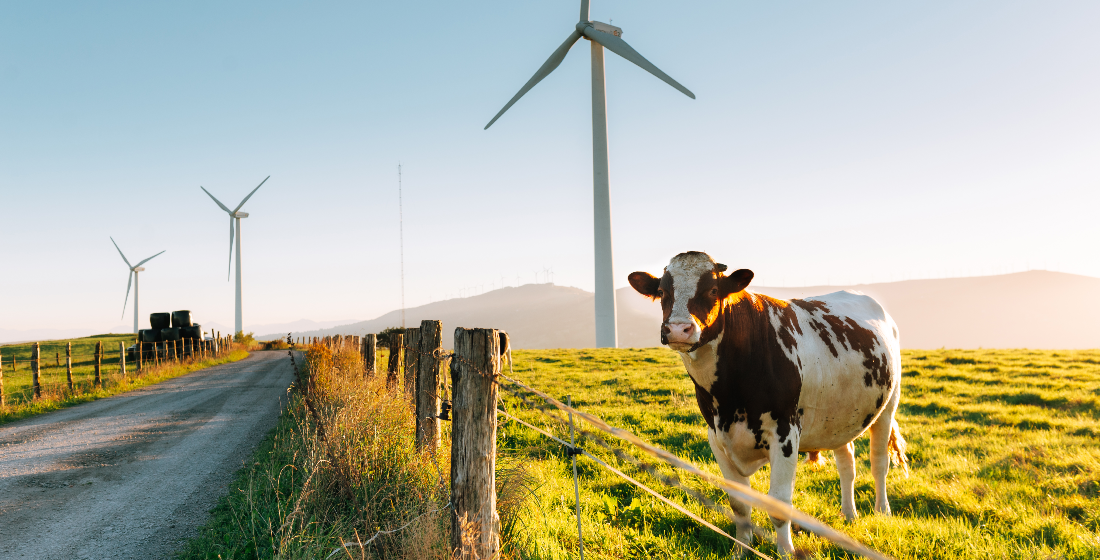How do we finance dietary transition?
While impact investors are driving the plant-based meats industry, what might be the effect on livelihoods and the emerging markets, and are public financial institutions catching up?

Although financial institutions – both public and private – along with governments and philanthropies are increasingly allocating capital under their climate finance mandates, food systems remain an overlooked sector of investment. While last year’s COP26 focused on fossil fuels and energy transition, activists have found it challenging to draw attention towards animal agriculture, which is recognised as a key contributor to global greenhouse gas emissions, and a growing number of consumers are beginning to shift their diets to plant-based substitutes that are increasingly available in the market. But are financial institutions catching up?
Development banks under their climate finance portfolio have been criticised for overlooking the meat and dairy industry as a contributor of greenhouse gases, and rather promoting the sector by investing in it. Private impact investors, on the other hand, are looking towards technological advances, including plant-based meats and proteins, to drive sustainable agriculture. Although it is a relatively niche industry, analysis by the FAIRR Initiative shows that 2021 was “the year of cultivated meat,” with over $506 million invested through the year into cultivated meat firms, far surpassing previous years. However, plant-based protein products as an alternative do not appear to be well-reflected in corporate disclosure and ESG reporting standards.
Food systems and agriculture projects were side-lined at COP26 in Glasgow last year, except an announcement on the Global Methane Pledge to cut methane gas emissions by 30% by 2030. Currently, approximately, a third of human-caused methane emissions come from livestock production, meaning that simply shifting diets away from animal-based proteins to traditional plant-based and alternative proteins can help offset these methane emissions, according to a recent report published in January 2022, by MSCI ESG in collaboration with Blue Horizon.
“Food system sustainability is critical in the fight against climate change,” says Olivia Stolt-Nielsen Meinl, director at Blue Horizon, an impact investment firm whose portfolio includes well-known alternative meat brands like Impossible, Good Catch and Beyond Meat; and cell-based meat brands like Finless Foods, Eat Just, Cubiq, SuperMeat and Mosa Meat. “Food system emissions account for 24% of the global total, more than all of transport combined at 14%, and second only to the energy sector’s 34% share. Yet energy and transport have long been the focus of public and private investments in cleaner, renewable technologies and efficient infrastructure. Taking one example, even though the food system is by far the largest contributor of methane emissions, all of the attention given to the Global Methane Pledge at COP26 was on gas leaks. Pipelines are of course significant but it’s a helpful illustration of how the food system has long been sidelined as a climate issue,” adds Stolt-Nielsen Meinl.
A rapid growth
While investments and returns in the alternative proteins industry is still a trickle in comparison to traditional animal proteins, big producers of traditional meats face the likelihood of heavy taxation, going forward. According to research group and investor network, FAIRR Initiative, carbon taxes are expected to cost beef companies up to 55% of the current average EBITDA by 2050. “As the largest driver of both methane from human activity and deforestation, the ambitions set at COP26 handed a big slice of responsibility to the food and agriculture sector… yet failures from methane to manure management underline the growing sense in the market that cows are the new coal,” says Jeremy Coller, chairman of $45 trillion FAIRR investor network.
More governments are subsidising the alternative protein sector, which Credit Suisse estimates could reach $555 billion of sales by 2050 and account for 25% of the global meat market, up from 5% in 2030. Besides plant-based meat, there are funding gaps in technologies that create slaughter-free meat grown from animal cells. This so-called “lab-grown” cultivated meat could reach $25 billion of sales by 2030, according to McKinsey.
Research from Blue Horizon projects there’s at least a $290bn market opportunity in alternative proteins in a little more than a decade as the share consumed globally grows from 2% last year to more than 10% of all meat, seafood, eggs, and dairy by 2035. Oliver Marchand, Global Head of ESG and Climate Research & Models, at MSCI, adds, “The financial sector is experiencing a major focus by capital market participants for systemic transformation to achieve net-zero emissions. Alternative proteins are one area in the food industry offering innovation to reduce a company’s carbon footprint.”
Last year, Impossible Foods raised nearly $500 million in a funding round led by existing shareholder Mirae Asset Global Investments, highlighting a surge in investor appetite for fast-growing plant-based meat makers. The latest round makes the Beyond Meat Inc (BYND.O) rival the most well-funded and richly valued plant-based burger startup in the United States, with more than $2 billion raised since its founding in 2011.
“Since 2016, Blue Horizon has raised over $850 million and invested in more than 60 food businesses at the intersection of biology, agriculture and technology. We currently invest across the food system, from sustainable packaging to agricultural businesses reducing pesticide use and emissions,” says Stolt-Nielsen Meinl.
FAIRR’s research indicates that cultivated meat experienced a sixfold increase of investment to reach $366 million in 2020, but that total has already been exceeded in 2021, which so far has seen investment of $506 million into cultivated meat firms.
Livelihoods and emerging markets
While the alternative meats and proteins industry is driven by impact investors, who are pouring in big sums of money in technological advances, development banks are more cautious to take the plunge. Activists have rebuked public institutions, which are driven by political impetus, for fuelling the meat and dairy industry in the form of bonds, loans, and shareholdings, and greenwashing the sustainability of meat industry. “Currently, whatever innovation is happening on the alternative proteins side, is led by the private venture space,” says Aarti Ramachandran, director of research and engagements at FAIRR. “From a food security perspective, we are beginning to see governments slowly creating enabling environments to encourage innovation, because there are key technical challenges that the sector faces to scale up to have a displacement potential.”
Dietary transition – much like energy transition – is closely linked with the loss of livelihoods and the creation of new ones, particularly in the emerging markets. While impact investors are pouring in funds in alternative proteins innovation in hope of gaining an early mover’s advantage, development banks and other public financial institutions have to be conscious of the impact on jobs in the process of scaling up plant-based diet. However, the potential is encouraging. A 2020 report, published by the Inter-American Development Bank (IDB) and the International Labour Organization (ILO) highlighted how shifting to healthier and more sustainable diets, which reduce meat and dairy consumption while increasing plant-based foods, would create jobs and reduce pressure on Latin America and the Caribbean’s biodiversity. With this shift, the region’s agri-food sector could expand the creation of 19 million full-time equivalent jobs despite 4.3 million fewer jobs in livestock, poultry, dairy, and fishing.
“Of the world’s 570 million farms, 84% cover fewer than two hectares and provide a third of all food. Smallholders’ dependence on agriculture is threatened by climate change, in which the food system itself is the second-largest contributor, so the resilience of these farms must be addressed to achieve a sustainable future. To leave behind people who depend on food and agriculture for their livelihoods would contradict the UN’s Sustainable Development Goals. Smallholder farmers must be supported to develop sustainable agriculture, whether you’re talking about cash crops, your morning coffee, and avocado toast, or Brazilian beef and alternative meats,” says Stolt-Nielsen Meinl.
According to a report published by Oxford Economics in 2021, the UK cultivated meat market has the potential to grow into an industry with a total gross value added contribution to UK GDP of over £2 billion in 2030. The detailed analysis of the value of economic activity generated, the number of highly-skilled jobs created and supported, and the taxation revenue (up to £523 million) generated shows the industry has the potential to become an important sectoral driver of growth during the next decade.
“Development banks might support farmers near rainforests to develop more sustainable beef production and, ultimately, livelihoods. Impact investors in the alternative protein market have backed cellular agriculture. Neither is leading, we’re just running different legs of the same race,” says Stolt-Nielsen Meinl.
Much like energy transition, the big question remains: what might the financial impact be on emerging markets if the world changes its (dietary) habits? “In terms of financial impacts of the transition, the world’s challenges should not be met with a system of food production, that in its current form is wholly unsustainable. And secondly, there is tremendous potential to exploit unexplored proteins to kickstart the industry and drive growth in emerging markets,” says Ramachandran. But this appears to be a long-term strategy, albeit with an encouraging start.





